Science News: Studying Mummified Seals
Before I get into today’s main topic, I wanted to show you the scene here in McMurdo from this morning. We had a bit of snow last night, blanketing the station with a fresh coat of white, which looked very pretty. Bad news: flights were cancelled again today. None of the WISSARD drillers or personnel could get out to our field camp at Subglacial Lake Whillans. The waiting game continues.
WISSARD is making a big splash in the news right now. Check out these links:
http://antarcticsun.usap.gov/science/contentHandler.cfm?id=2793
Webcam photos were captured by my friend Bill, who is back in the U.S.
I took the following photos on the walk to Crary Lab this morning.
Today I’d like to tell you more about the research on the mummified seals found along the coast of the Ross Sea region. When I first came to Antarctica in 1998, I was able to travel by helicopter to the Dy Valleys. The Dry Valleys region is the largest ice-free area in Antarctica. This region represents less than one percent of the land of this continent. The valley floors are covered with loose gravel, and the valleys contain many unique features such as small streams, lakes, and the Onyx River…the longest river in Antarctica.
A field camp in or near the Dry Valleys might look like this.
Mummified seal carcasses have been found in the Dry Valleys. The Weddell seal carcass (below) was photographed by WISSARD scientist Reed Scherer on a 1987 visit to Cape Chocolate, an area where fine brown silt had been deposited…giving it a chocolate-colored look. I remember seeing a mummified seal on my field trip to the Dry Valleys, and not thinking much of it at the time.
Scientists in McMurdo study living populations of the three types of seals found in this area: crabeater, Weddell, and leopard seals. Scientists also study remains of seals, mummified by the cold, dry climate. These mummified seals provide more information than I thought possible.
I sat down to talk with Paul Koch, Dean of Physical and Biological Sciences at the University of California, at Santa Cruz. Paul is a professor of Earth and Planetary Sciences. He made his first trip to study mummified seals in Antarctica back in the 2006-2007 field season. Paul first learned about this study from Brenda Hall, who works at The University of Maine Climate Change Institute.
Brenda is interested in understanding the causes of ice ages and climate change, as well as the stability of ice sheets. Her work on the seal mummies helps reconstruct the past marine mammal populations and distribution in Antarctica. Paul and Brenda have teamed up to collect data on mummified seal remains in the Ross Sea region and to study the effects of climate change on the elephant seal population.
Here is Brenda with a seal mummy that is still in pretty good condition. Many times scientists find less physical evidence to work with.
Brenda has been conducting research in Antarctica for many years and this is her 24th field season on the ice. While working along the coast of the Ross Sea, she was finding fur from elephant seals and began to ask questions about their history in this region.
Elephant seals are rare here today and populations don’t commonly occur on the coast of the Ross Sea. This animal prefers to swim to the edge of a beach and crawl up to gravel. Today the “fast” ice (sea ice that has frozen along the coasts and fastened to them) is frozen to the beaches, like a mini ice shelf for the beach. Elephant seals will not come to these areas because they wouldn’t be crawling across the ice to reach a beach.
The photo below shows southern elephant seals on a Subantarctic island closer to South America.
Elephant seals get their name from the proboscis (an elongated nose or snout) of adult males, which looks like an elephant’s trunk. The male’s, called bulls use the proboscis to make very loud roaring noises and it also helps them absorb moisture back into their bodies. There are two main species of elephant seals; northern and southern. Brenda and Paul study study remains of the southern elephant seal colonies.
But when did these creatures live here and when did they leave? How has changing climate affected this animal population over the course of many years?
Finding the mummified elephant seals and bits of their fur along the beaches indicates that the conditions were less icy than today. Through radiocarbon dating (a special way scientists can date organic remains of plants or animals) scientists have found seal remains that range between2,500 years old (oldest found in this region) to 400 years old (youngest). Fur collected in this region has been dated to be 8,000 years old.
This sample of fur was collected from under the gravel along the coast. Notice the high-tech scientific equipment used to move the gravel and collect the fur….a regular spoon.
This photo shows Paul collecting samples of seal fur.
Scientists use ancient DNA samples taken from the seal remains to gather genetic information. They can get an idea of how big the population of elephant seals was in this region. They estimate that a half million elephant seals lived here long ago.
This species of seal can currently be found at Macquarie Island, a Subantarctic island southeast of Australia, about halfway between Australia and New Zealand. Once nearly hunted to the brink of extinction (at the end of the 19th century), both the southern and northern elephant seal populations have made a comeback, as evidenced by healthy populations of southern elephant seals around Macquarie Island and other Subantarctic islands.
Scientists have used genetic information to link the seals at Macquarie to those remains found in Antarctica. The seals at Macquarie contributed to the colony here, but the genetic structure is different. The two populations of seals have different histories for approximately 500-8,000 years. The elephant seals here in the Ross Sea region weren’t just Macquarie seals finding their way south. Likewise, as colonies here ended, some of the seals in the Ross Sea region would have traveled north toward the Macquarie Island area, but didn’t all go the same location.
This image shows the area of study in the Ross Sea region. Scientists collect samples from up and down the coastline…from the top of the map to the bottom. At Terra Nova Bay, where there are beaches, scientists have found around forty seal mummies.
The big questions and ideas: Scientists think that between 500-1,000 years ago, the Ross Sea became icier. They are curious about how the seals here today responded to that change. Today there are healthy populations of the crabeater, Weddell, and leopard seals in this area. Obviously the change in climate affected the elephant seals a great deal more. By studying the remains of the mummified elephant seals, scientists can learn more about what was going on in the ocean environment and what aspects or conditions of the ocean might have affected these animals.
By sampling the seal mummies and mapping the location of these specimens scientists can learn about the age of the mummies (how old they are in terms of history, but also how old they were when they died), whether they were male or female, and they can learn more about their diet and foraging (hunting) areas; on the coast, ice shelf, ocean. Scientists do not know where the rookery was (the colony of breeding animals). It could have been close to here or it could have been farther north. And, in this study, scientists are not necessarily interested in the mummified seals in the Dry Valleys, but more interested in those found along the coast.
What will happen in the next 500 years as the climate continues to change? How do living species respond to climate change? What ecological traits might contribute to their ability to survive these changes? These are all questions that scientists in Antarctica are researching; studying remains from past species and species living in the Ross Sea area in present day Antarctica.
I also want to share some topics from Paul’s other research. He has studied lemurs in Madagascar. Although there are only little lemurs there now, there are many extinct species of lemurs, including giant lemurs. I nver knew there were giant lemurs!! Paul studies the ecology of both the extinct and surviving lemur populations. Human impact and disturbance have had an effect on the populations. The link below talks more about the research on lemurs. It is so interesting to read how scientists make discoveries and learn more about animals and their ecosystems.
http://www.uc.edu/news/NR.aspx?id=15874
Another one of Paul’s research topics has been crocodiles and their ability to tolerate salt water throughout their history. Other studies have include saber tooth cats and California condors, both extinct species.
When I asked Paul what factor (s) influenced him to be a scientist (as I ask all scientists during interviews) he gave me a unique response. When he was eleven years old he spent time recovering from an accident by reading comic books. He says his interest in Marvel Comics made him want to study genetics. The scientists in those comic books were the good guys, not evil. That was a cool way to get interested in science!
Whatever motivates scientists to do their research, it is fascinating to learn about their projects and discoveries. Now I wish I had stopped to examine that mummified seal on my Dry Valleys field trip fourteen years ago. It was worth a closer look.
One more photo: Paul shared this with me. It shows the formation of the rock/sediments based on wave action. Can you see the rings of the beach, almost like rings on a tree. Based on scientific study the top beach was formed about 7,000 years ago. The bottom beach was formed approximately 500 years ago. I learned a lot from my visit with Paul, and I want to thank him for the information and photographs.
Make every day a day for learning! Ask questions; search for answers. Have a great day!





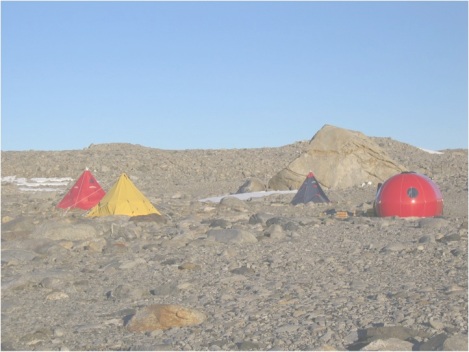


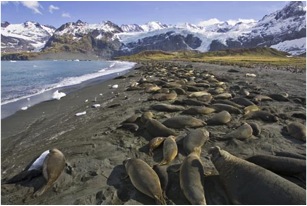
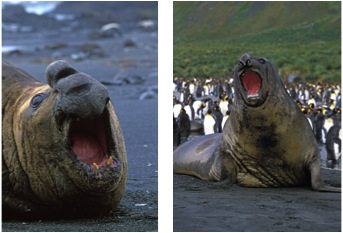




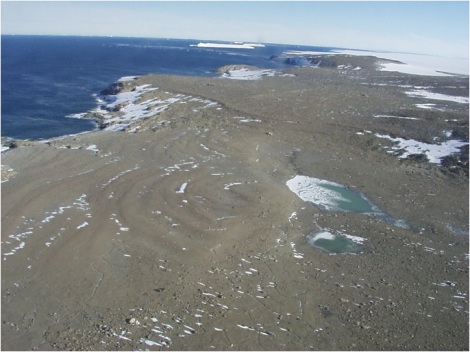

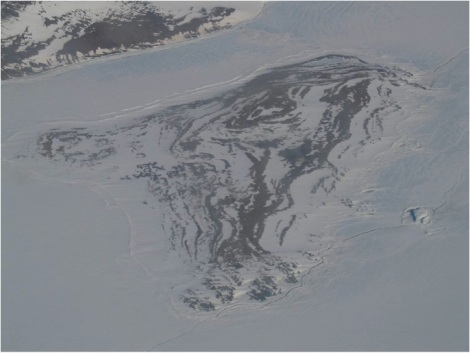
Lemurs, I want to move it, move it!
Chris
That made me smile! It reminds me of the MANY times I’ve watched the movie “Madagascar” with Austin! 🙂
Betty, I didn’t read today’s article yet but was wondering if you read online today’s NY Times article about WISSARD? Here is the link:
http://www.nytimes.com/2013/01/15/science/wissard-project-seeks-signs-of-life-under-antarctica.html.
Yes….we’ve all been circulating that link around, so please pass it to anyone you know! We’re excited!
Is it sad to see the dead seals?
Hi Niall,
It’s not really sad, because I know scientists are learning from that dead seal. I do feel badly that it died, but that would have been a long time ago….and so many survived! That’s part of nature and the web of life.
This is a great post I love the pics!!!!!!!
Thanks!!! You are a mystery Husmann student! 🙂
I wonder, like Niall does, whether it’s sad to see the dead seals:( I am going to share this post with my 6th grade LA/SS teachers who will soon be starting to study ancient Egypt and mummies. We have a cool book in our book room about animal mummies, so I’m going to see if it says anything about seals. Fascinating stuff! And the kids love this kind of gross learning.
Oh Ann…good connection about the mummies! Nature mummifies these seals…very interesting how that happens. And you are right, it’s sad and a bit gross, but I’m fascinated by what scientists can learn from studying the mummified seals. I never knew there was so much information hidden inside of a dead animal! 🙂
It was great to learn about mummified seals but kind of creepy at the same time.
The do look a bit creepy, I agree Holden! 🙂 But SO interesting to learn about the work of scientists studying them!
I love your pic and it was kind of creepy
HI Mariah,
Thanks and I agree….a bit creepy! 🙂
Cool 🙂 but sad 😦